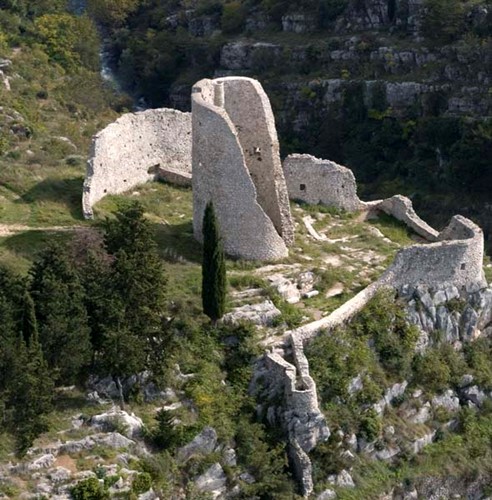ST. MICHAEL'S FORTRESS
The oldest of four Šibenik’s fortresses, St. Michaels Fortress is one of the most significant cultural and historical monuments in the town. First mentioned in 1066, medieval fortress is the place from which city emerged. Simply said, if there had been no St. Michael’s Fortress, there would have been no Šibenik. Built about sixty meters above the ground, on a steep rock looking over St. Anthony’s Channel, St. Michael’s Fortress dominates over the old town of Šibenik, bay and mouth of river Krka. It was named after the church from the 12th century which is located inside the walls. The imposing and strong tetragon shape, surrounded by defensive walls, made the fortress a protector of the area.
With its new added facility – a unique open air stage with 1077 seats, the revitalized fortress has opened its doors in 2014, and has since been an unavoidable cultural tourism destination offering numerous evening events and concerts to its visitors.
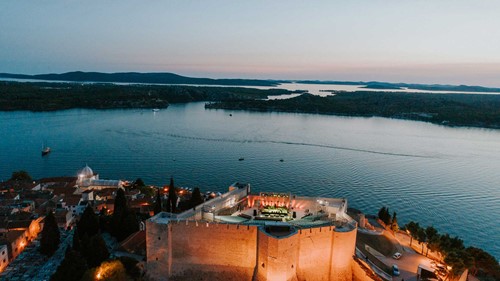
THE FORTRESS OF ST. JOHN
St. John's Fortress is located on a hill 115 m above the old town centre of Šibenik. It was built in 1646 in the form of a star, according to the project of Venetian military engineer Antonio Leni, in order to protect the town from Turkish attacks from the mainland. It is interesting that the construction of the fortress lasted for only a month and a half, because Šibenik's citizens were so afraid of Turkish attacks that they helped building it too.
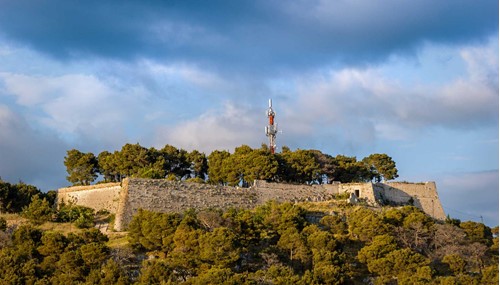
BARONE FORTRESS
Barone Fortress was built in the summer of 1646, alongside the nearby St. John Fortress. They were built by the citizens of Šibenik in less than two months to strengthen their city's defense against the Ottomans. Baron von Degenfeld was the commander of the defense, which fought off the attacks. The enemy retreated with great losses and the grateful citizens name the fortress Barone, after its builder and their hero, Baron von Degenfeld.
Barone Fortress is a unique regional cultural attraction, a place where, with the help of augmented reality (AR) technology, one can look at Šibenik's past. The Gastro-cultural center with a special offer of selected delicacies and wines promotes the local gastronomic offer while lasting memories of time spent in Šibenik can be found at the Barone souvenir shop.
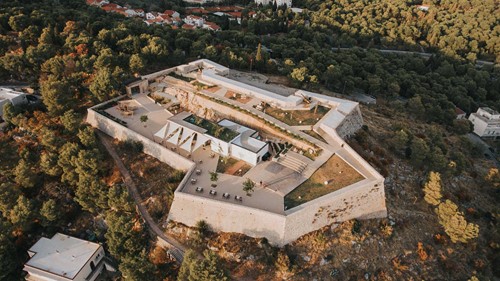
THE KNIN FORTRESS
The fortress consists of five connected parts located 345 m above sea level and about 100 m above the town of Knin. It is 470 m long and on its highest part 110 m wide. The defensive walls, about 2 km long and enclosing the fortress from all sides, are even up to 20 m high at several places. The fortress is a living monument of culture and includes a museum, exhibition galleries and a restaurant, so it represents the main brand of Knin's cultural tourism. It is open from March 16th to October 31st every day from 7 am to 7 pm, and out of season from 7 am to 3 pm.
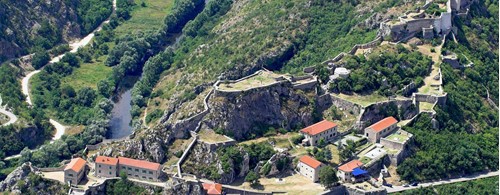
THE GRADINA FORTRESS
In the 19th century the fortress lost all functions and became a source of building materials for the growing city of Drniš. Today's remains that are visible on the southern side are the original part of the medieval fortress, while the central tower and the north-eastern defence wall are added in the period of Ottoman rule.
